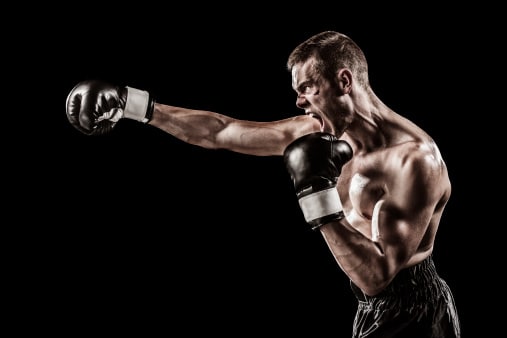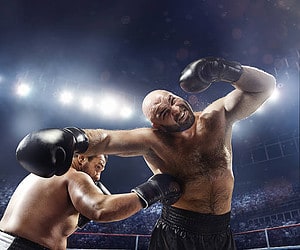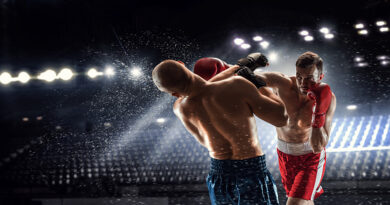What are the basic punches in boxing?
Introduction
Boxing punches are the foundation of any successful boxer’s arsenal. They are the most important part of a boxer’s technique and can be used to great effect in both offense and defense. Boxing punches come in a variety of forms, from the jab to the uppercut, and each has its own unique purpose and application. Knowing how to use each punch effectively is essential for any boxer looking to succeed in the ring. In this article, we will discuss the different types of boxing punches, their uses, and how to properly execute them.
A Comprehensive Guide to the Different Types of Boxing Punches
Boxing is a sport that requires a great deal of skill and technique. It is a sport that requires a fighter to be able to throw a variety of punches in order to be successful. There are many different types of punches that can be used in boxing, and each one has its own unique purpose and application. In this guide, we will discuss the different types of punches used in boxing and how they can be used to your advantage.
The Jab: The jab is the most basic punch in boxing and is used to set up other punches. It is a straight punch thrown with the lead hand and is used to measure distance and keep the opponent at bay.
The Cross: The cross is a powerful punch thrown with the rear hand. It is used to deliver a powerful blow to the opponent’s head or body.
The Hook: The hook is a punch thrown with the lead hand and is used to target the opponent’s head or body. It is a powerful punch that can be used to surprise the opponent.
The Uppercut: The uppercut is a punch thrown with the rear hand and is used to target the opponent’s chin or body. It is a powerful punch that can be used to surprise the opponent.
The Overhand: The overhand is a punch thrown with the rear hand and is used to target the opponent’s head or body. It is a powerful punch that can be used to surprise the opponent.
The Body Punch: The body punch is a punch thrown with either hand and is used to target the opponent’s body. It is a powerful punch that can be used to wear down the opponent.
The Counter Punch: The counter punch is a punch thrown in response to an opponent’s punch. It is used to surprise the opponent and can be used to set up other punches.
The Combination: The combination is a series of punches thrown in quick succession. It is used to overwhelm the opponent and can be used to set up other punches.
These are the different types of punches used in boxing. Each one has its own unique purpose and application, and it is important to understand how to use each one effectively. With practice and dedication, you can become a master of the different types of punches used in boxing.
Training Tips for Developing Your Boxing Punching Technique
1. Start with the Basics: Before you can begin to develop your boxing punching technique, it is important to master the basics. Make sure you understand the fundamentals of boxing, such as proper stance, footwork, and hand positioning.
2. Practice Proper Form: Once you have the basics down, it is important to practice proper form when throwing punches. Make sure your punches are thrown with proper technique, such as keeping your elbows in, rotating your hips, and keeping your chin down.
3. Focus on Speed and Power: Speed and power are essential components of a good boxing punch. Make sure you are focusing on developing both speed and power when throwing punches.
4. Use a Heavy Bag: A heavy bag is a great tool for developing your punching technique. Make sure you are using proper form when hitting the bag and focus on developing speed and power.
5. Incorporate Combinations: Combinations are an important part of boxing. Make sure you are incorporating combinations into your training, such as jab-cross-hook-uppercut.
6. Practice Footwork: Footwork is an essential part of boxing. Make sure you are practicing your footwork, such as moving in and out of range, pivoting, and slipping punches.
7. Use a Partner: Having a partner to practice with is a great way to develop your boxing punching technique. Make sure you are focusing on proper form and technique when practicing with a partner.
8. Visualize: Visualization is a great way to develop your boxing punching technique. Make sure you are visualizing yourself throwing punches with proper form and technique.
9. Get Professional Help: If you are serious about developing your boxing punching technique, it is important to get professional help. Make sure you are working with a qualified boxing coach who can help you develop your technique.
10. Have Fun: Above all else, make sure you are having fun when developing your boxing punching technique. Enjoy the process and don’t be afraid to make mistakes.
The Science Behind the Power of the Jab: Exploring the Physics of Boxing Punches
The jab is one of the most important punches in boxing, and understanding the science behind it can help boxers maximize their power and accuracy. To understand the physics of a jab, it is important to consider the forces at work during the punch.
When a boxer throws a jab, the force of the punch is generated by the boxer’s body. The boxer’s arm acts as a lever, with the shoulder as the fulcrum and the fist as the load. The boxer’s body weight is transferred to the fist through the shoulder, and the boxer’s muscles generate the force of the punch. The boxer’s body weight is also used to generate momentum, which helps to increase the power of the punch.
The power of the jab is also affected by the boxer’s technique. The boxer’s stance and the angle of the punch are important factors in determining the power of the punch. A boxer should stand with their feet shoulder-width apart and their weight evenly distributed. The boxer should also keep their elbow close to their body and their fist in line with their shoulder. This will help to ensure that the punch is delivered with maximum power.
The speed of the punch is also important. The faster the punch, the more power it will have. The boxer should use their hips and legs to generate power and speed. The boxer should also use their core muscles to generate power and stability.
Finally, the accuracy of the punch is important. The boxer should aim for the target with their fist and keep their arm straight. This will help to ensure that the punch lands on the target with maximum power.
By understanding the science behind the power of the jab, boxers can maximize their power and accuracy. With proper technique and practice, boxers can use the jab to their advantage and become more successful in the ring.
Conclusion
In conclusion, boxing punches are an imporgtant part of the sport of boxin. They are used to score points, knock out opponents, and defend against incoming punches. Different punches have different effects, and it is important for boxers to understand the different types of punches and how to use them effectively. With practice and dedication, boxers can become proficient in the art of punching and use it to their advantage in the ring.






